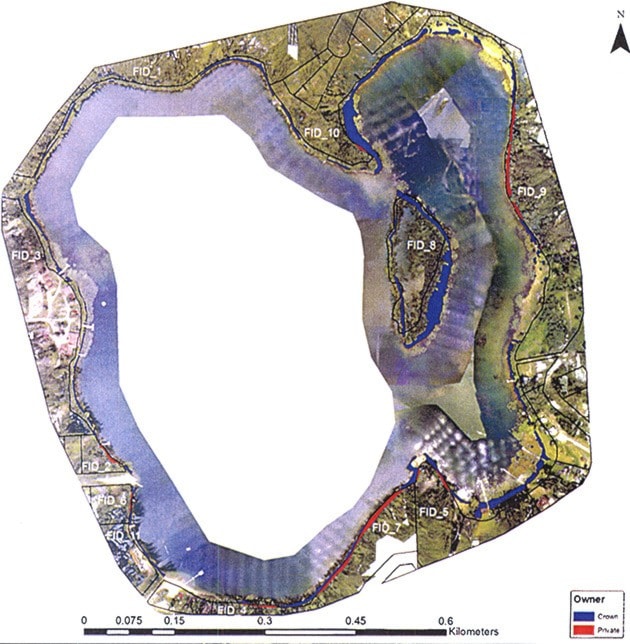“Eradication of yellow flag iris is within our grasp,” biologist Dr. Catherine Tarasoff told Clearwater town  council during its Dec. 6 meeting.
council during its Dec. 6 meeting.
The Thompson Rivers University instructor has done experiments at Dutch Lake to control the invasive plants over the past three years.
Last June she used a drone to photograph and then map the extent of the infestation.
There are approximately 1.3 ha of infested areas below the waterline and 0.4 ha above the waterline, she reported.
Because land below the waterline belongs to the Crown and only a portion of the lakeshore is privately owned, nearly all the infested area is Crown land.
She recommended using fabric pool liners as “benthic barriers” to smother the plants.
Repurposed conveyor belting, which she used before, is too heavy and difficult to work with, she said.
Tarasoff has tested the benthic barrier technique along the shore of Dutch Lake and at other locations with good results.
An aggressive program over 10 to 15 years would be needed, she said.
Otherwise, the iris plants will continue to spread and will require even more effort to control.
Fabric pool liner is relatively expensive to begin with, she said, but could be used year after year.
She felt the best approach would be to treat the lakeshore section by section, with first priority being the southeast corner from Dutch Lake Motel to the end of Harby Road.
She advised council to seek provincial and federal funding to control yellow flag iris on Crown land.
For private landowners, the municipality could make available, at no cost, repurposed conveyer belting and/or pond liner for those wishing to control yellow flag iris.
She noted that, if necessary, the District could enforce the Provincial Weed Control Act, which ensures weed control is carried out on private property.
An ongoing maintenance program to prevent re-infestation would be required even after the 10 to 15 year aggressive control program was ended.
Education is required as well as control, she added. While yellow flag iris is no longer available commercially, some homeowners still trade it with each other.
Although a pretty flower, yellow flag iris is a problem for many reasons, according to Invasive Species Council of BC.
Council of BC.
It colonizes quickly and spreads in dense stands and rhizome mats, displacing native plants and decreasing biodiversity. It also reduces habitat and resources available for wildlife, since very few native wildlife species can use this plant for food or habitat.
Habitat and the width of water courses is also altered since the plant can compact soils, trapping sediments and restricting water flow. Plants also clog small streams and irrigation systems, and seeds can block pipes.
Inset photos:
Top: Dr. Catherine Tarasoff checks out a iris control site next to Dutch Lake several years ago.
Bottom: Yellow flag iris.
